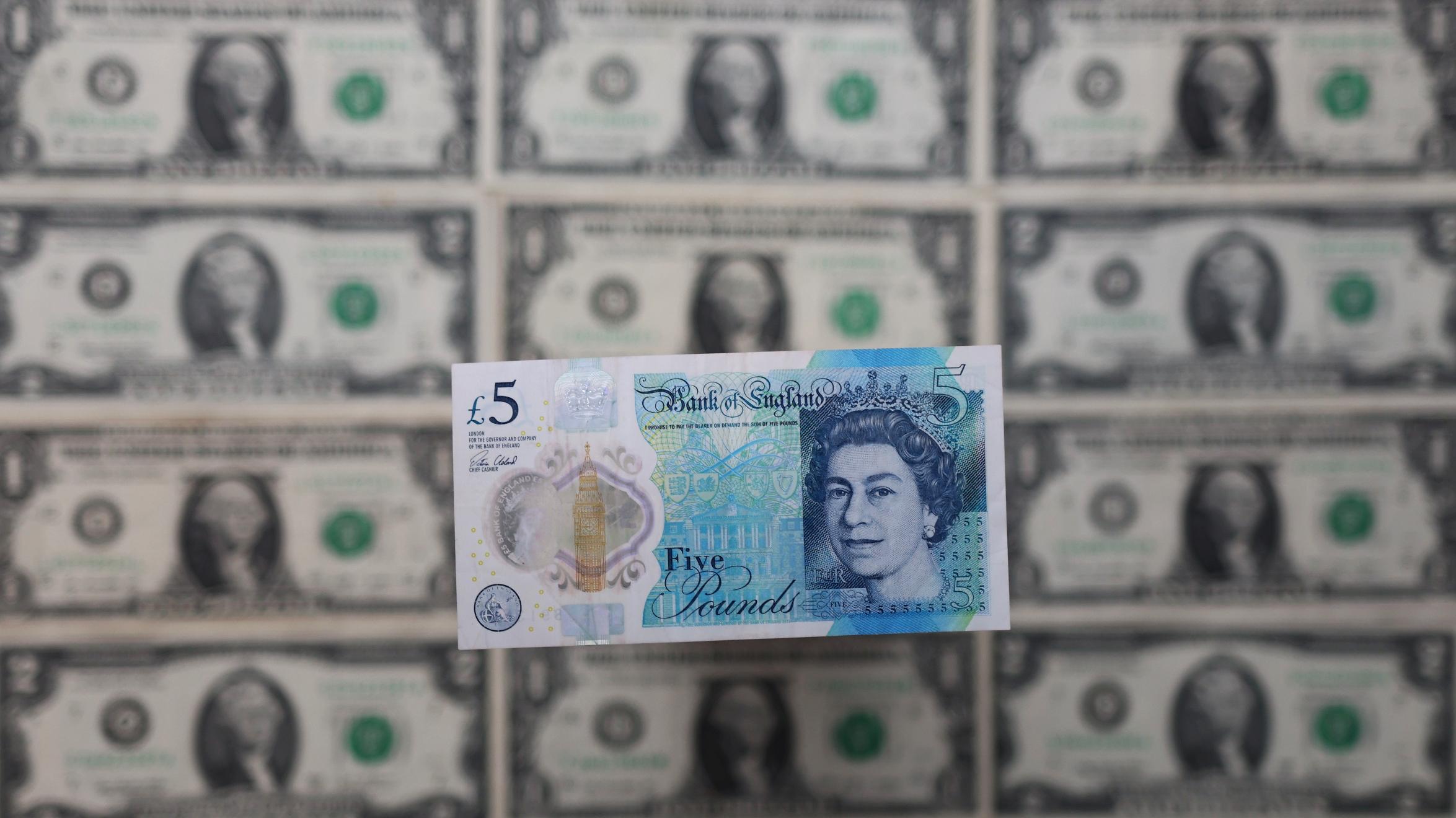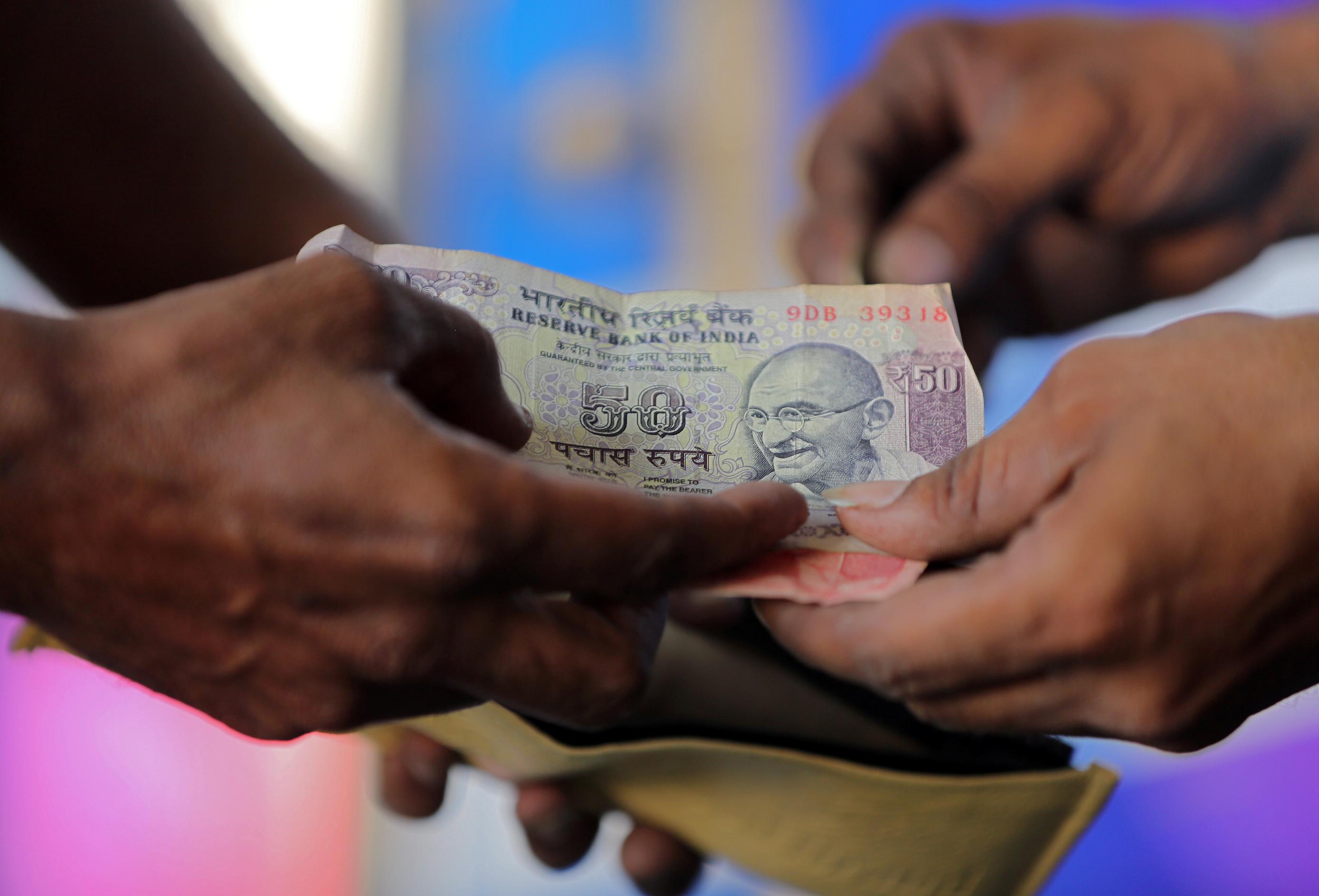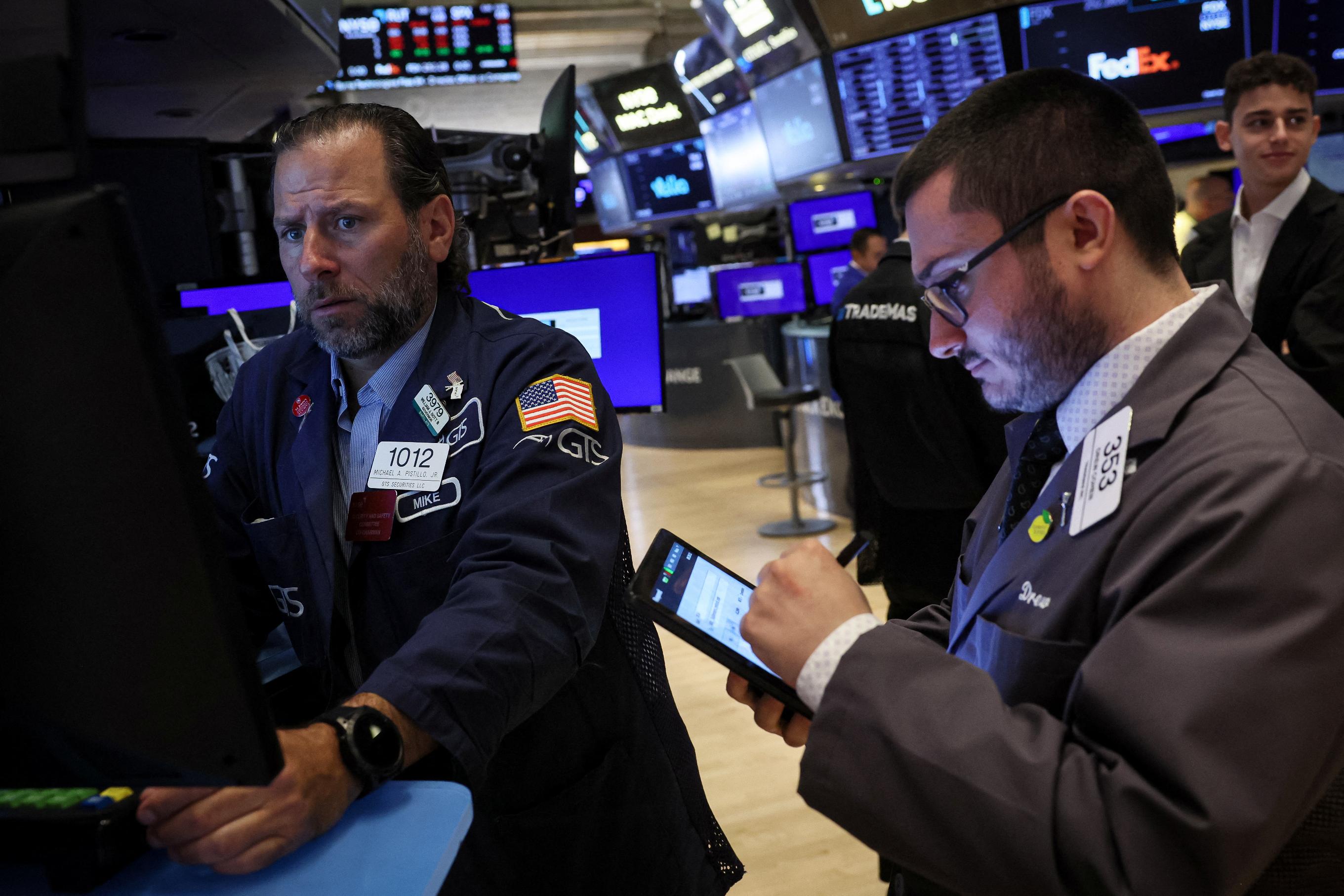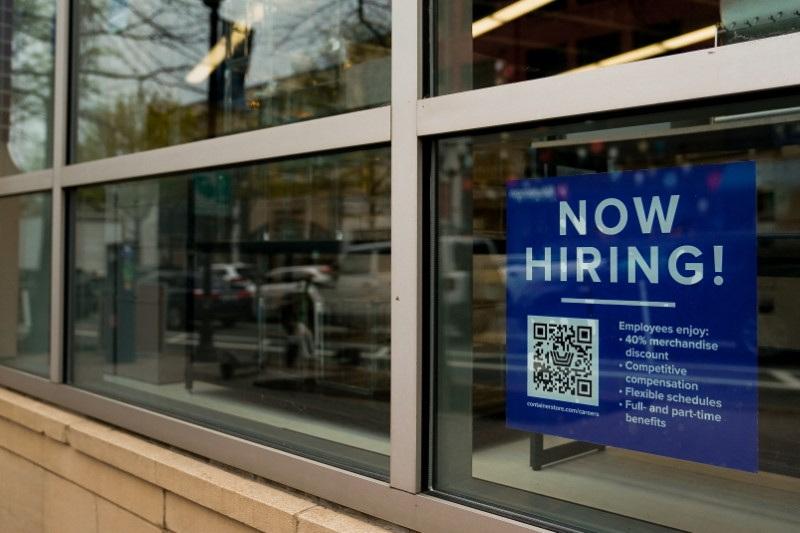
2024-08-30 10:35
LONDON, Aug 30 (Reuters) - Sterling steadied on Friday but was set to end the week slightly lower after strong U.S. data underpinned the dollar. The pound was last up 0.1% at $1.3181 yet was set to finish the week down 0.22%. The euro was slightly lower against the pound at 84.05 pence. Investors on Friday were waiting for the release of the U.S. personal consumption expenditures price index, the Federal Reserve's preferred inflation gauge, at 1230 GMT (8:30 a.m. ET). Sterling has fallen after hitting a two-year high against the dollar on Tuesday, with stronger-than-expected U.S. economic data on Thursday helping boost the American currency. The pound rallied over the previous two weeks, supported by investor expectations that the Bank of England will cut rates less sharply than the Federal Reserve in the coming months, after making its first reduction in August. The euro remains around its lowest against the pound in two years as investors expect faster rate cuts from the European Central Bank than the BoE. Euro zone inflation slowed sharply to 2.2% year-on-year in August, data showed on Friday. "A rebound in EUR/GBP now requires a meaningful rebuilding in Bank of England easing expectations," said Francesco Pesole, currency strategist at ING. "That seems unlikely to happen until we get new tier-one data in the UK, as BoE officials have broadly reiterated a cautious stance on easing." Data on Friday did little to budge sterling ahead of the U.S. figures. British lenders approved the highest number of mortgages in July since the start of the "mini-budget" crisis in 2022 under former Prime Minister Liz Truss, according to Bank of England figures. Separate data showed British house prices unexpectedly fell in August for their first monthly drop since April, although they remained 2.4% higher than a year earlier. Sign up here. https://www.reuters.com/markets/currencies/sterling-steady-heads-weekly-fall-dollar-strength-2024-08-30/

2024-08-30 10:25
MUMBAI, Aug 30 (Reuters) - The Indian rupee ended little changed on Friday as dollar demand from state-run banks offset the impact of likely inflows into local equities. The rupee closed at 83.8625 against the U.S. dollar, nearly flat compared to its close at 83.87 in the previous session. While most Asian currencies rallied between 2% to 6% in August, the rupee weakened 0.2% to log its second consecutive monthly decline. The currency touched its record low of 83.9725 and remained under pressure through most of the month due to the unwinding of yuan-funded long bets on the rupee, tepid equity inflows and strong dollar demand from local importers. On Friday, though, the rupee found some support from likely dollar inflows but its gains were capped by strong dollar demand from state-run banks, traders said. A higher weightage for Indian equities in MSCI's emerging market equity index, effective on Friday, was expected to draw up to $3 billion of inflows, according to Nuvama Alternative and Quantitative Research. The dollar index was little changed at 101.3 ahead of the release of U.S. personal consumption expenditure (PCE) inflation data. With a rate cut by the Federal Reserve fully priced in for the September meeting, the inflation data will help investors gauge the pace and extent of policy easing the central bank may deliver this year. Investors are currently pricing in 100 bps of rate cuts over 2024. For the rupee, the "bias is slightly on the positive side," but the currency is unlikely to rise above 83.70 in the near term, Dilip Parmar, a foreign exchange research analyst at HDFC Securities said. Likely absorption of dollar inflows by the central bank, alongside local dollar demand, is expected to keep a lid on the currency's gains, Parmar said. Sign up here. https://www.reuters.com/markets/currencies/rupee-ends-flat-day-logs-second-consecutive-monthly-decline-2024-08-30/

2024-08-30 10:05
A look at the day ahead in U.S. and global markets from Mike Dolan Record stock market highs have lit up across the world once again - though not yet for the usual suspects in the S&P500 (.SPX) , opens new tab and Nasdaq (.IXIC) , opens new tab. Despite a rare stumble for the artificial intelligence theme after Nvidia's results underwhelmed this week, the rest of the stock market complex shrugged it off and has instead lapped up a tasty diet of brisk economic growth along with falling inflation and interest rates. So much so that if you adjust the S&P500 for the outsize contribution of Big Tech megacaps, it now shows the equal-weighted index (.EWGSPC) , opens new tab hitting record highs with year-to-date gains of more than 10%. Underlining the point, the Dow Jones Industrial Average (.DJIA) , opens new tab hit another record close on Thursday and both Germany's DAX (.GDAXI) , opens new tab and Europe's broad STOXX 600 (.STOXX) , opens new tab hit new highs on Friday too. And that broadening of what many had feared was an overly concentrated market is another sign of some normalisation of market behaviour, along with a return of volatility gauges back closer to long-term averages and a resumption of the negative correlation between stock and bond returns. For many, that's a much more sustainable constellation and the economic picture backs that up going into Monday's Labor Day holiday. Second-quarter U.S. GDP growth was revised higher on Thursday, while embedded PCE inflation gauges were marked lower and weekly jobless readings were little changed. The release on Friday of the July monthly PCE reading is next up and is expected to be similarly benign, allowing the Federal Reserve to go ahead with its first quarter-point interest rate cut next month - while market pricing retains a total of 100 basis points of easing to year-end. Wall St stock futures , were higher again ahead of the final trading day of the month and Treasury yields fell back a touch from Thursday's slight gains. Soothing the bond market in a week of heavy new debt sales was an affirmation late Thursday of Fitch's AA+ U.S. sovereign credit rating with a stable outlook. Borrowing costs across the economy are ebbing more generally, with the average rate on popular U.S. 30-year mortgages falling to 6.35% this week, the lowest since May 2023. Pointedly, Fitch's review said the U.S. fiscal profile is likely to remain largely unchanged regardless of who wins the upcoming presidential election, citing structural strengths including high per capita income and financial flexibility as bolstering the credit rating. And despite a flurry of election trades earlier in the summer, the dramatic switch of fortunes in opinion polls and betting markets has barely flickered on the overall setting of buoyant U.S. markets at large. Democratic Vice President Kamala Harris' late entry in the presidential race after President Joe Biden's withdrawal in July tightened the race against Republican candidate Donald Trump. A Reuters/Ipsos poll this week showed she leads 45% to 41% and another published in Friday's Wall Street Journal confirmed she was marginally ahead - with betting markets now seeing her as clear favorite. Harris' first interview with a major news organization since becoming the Democratic nominee was aired on CNN on Thursday, but there was little to disturb market views of what her Presidency would look like. In Europe, the inflation and interest rate picture was arguably even better. Euro zone inflation fell to its lowest level in three years at 2.2% this month, just shy of the European Central Bank's 2.0% target and boosting the case for a second ECB interest rate cut of the year in September - even before the Fed gets going. A day earlier, Germany's EU-harmonized headline inflation rate actually hit the 2.0% target for the first time in almost 3-1/2 years. Money markets currently see a 60% chance the ECB will cut rates a third time by October - slightly lower than on Thursday. Euro/dollar steadied as a result following this week's sharp recoil from one-year highs. The inflation picture in Japan is slightly different. Core inflation in Japan's capital accelerated for a fourth straight month in August, tracking comfortably above the central bank's 2% target and backing market expectations of more interest rate hikes ahead. Dollar/yen held steady just above 145. But China's yuan was a much bigger mover - hitting its best levels in more than a year and authorities battle to shore up recently sliding government bond yields and August business surveys are due for release on Saturday. Increased dollar selling by Chinese corporates - triggered by shifting dollar expectations - could morph into a "stampede" in the short term, boosting the yuan further, China International Capital Corp said in a note. In corporate news, AI refused to be left out of the limelight. Apple AAPL.O and Nvidia (NVDA.O) , opens new tab are reportedly in talks to invest in OpenAI as part of a new fundraising round that could value the ChatGPT maker above $100 billion, according to media reports on Thursday. Key developments that should provide more direction to U.S. markets later on Friday: * US July PCE inflation gauge, personal income and consumption, Chicago August business survey, final Aug reading for University of Michigan sentiment; Canada Q2 GDP revision * European Central Bank board member Kerstin af Jochnick speaks in Frankfurt * US corporate earnings: Marvell Technology Sign up here. https://www.reuters.com/markets/us/global-markets-view-usa-2024-08-30/

2024-08-30 08:59
Sept 2 (Reuters) - U.S. jobs numbers dominate the agenda as markets brace for a choppy September, with France seeking a way through its political mess, Germany having regional polls and African leaders heading to Beijing. Here's your guide to the week ahead in financial markets from Kevin Buckland in Tokyo, Ira Iosebashvili in New York, Duncan Miriri in Nairobi and Dhara Ranasinghe and Naomi Rovnick in London. 1/ LABOUR OF LOVE With the Federal Reserve on the cusp of monetary policy easing for the first time in years, attention turns to the Sept. 6 U.S. employment data for clues on how aggressively the Fed might move in coming months. Fed Chair Jerome Powell flagged it was time to start reducing interest rates, and many in the markets expect the process to begin with a 25 basis point cut at the Sept. 17-18 meeting. Further signs of the labour market weakness that helped to roil markets in late July and early August could revive recession fears and cause investors to dump riskier assets. Expectations of heftier rate cuts have dented the dollar, which is hovering around one-year lows, in part on expectations that imminent monetary policy easing will narrow the yield advantage the U.S. has over many developed economies. 2/ VOLATILITY Global stocks have bounced back to near-record highs after an early August swoon driven by a Bank of Japan interest rate hike causing a feedback loop of selling and volatility. There could be more trouble ahead. Bank of America analysts say stock market volatility tends to rise in September and October. Citi strategists reckon market expectations of future stock market swings (.VIX) , opens new tab are too low. August's selloff was ignited as carry trades that gambled on U.S. rates staying far higher than Japan's imploded. Unsuccessful speculators sold other assets to cover losses, helping to wipe about $1 trillion off U.S. tech stocks. Markets have since moved to a view that Fed rate cuts will support stocks and bonds, but data surprises could disrupt currency markets and potentially cause further cross-asset shocks. 3/ CHILL IN THE AIR Summer has ended abruptly in France. Having successfully hosted the Olympics, France needs a government, and the focus has returned to President Emmanuel Macron's political crisis. Socialists and Greens say they will not participate in further talks with Macron, who has slammed the door on a potential leftist government. Investors, waiting for progress, have shunned French stocks. The CAC index remains 5% below levels seen in June before Macron announced a snap election and has hardly risen this year, while German shares have rallied 12%. But Germany has problems of its own. Big wins for the far-right AfD in Sunday's two regional elections is a headache for German Chancellor Olaf Scholz fractious coalition before 2025's national election. The economy is weak, shrinking 0.1% in Q2. The Ifo Institute president says the economy is increasingly falling into crisis. The markets' focus on France, could soon shift to Germany. 4/ UNDAUNTED HAWKS Bank of Japan officials have not shied away from further rate hikes despite the August market ructions as BOJ chief Kazuo Ueda's sharp hawkish shift collided with U.S. recession worries and an aggressive unwind of bets against the yen and global stocks sell-off. Deputy Governor Ryozo Himino echoed his boss by saying monetary tightening would continue if inflation evolves as the BOJ expects and markets need to be monitored closely. The course for consumer prices is far from clear though: Tokyo CPI, a bellwether for the nationwide figure, accelerated to 2.4% in August, above the BoJ's 2% target. The closely watched core-core measure excluding fresh food and energy came in at just 1.3%. Retail sales figures published at the end of August fell short of estimates, while household spending has declined every month since February last year. An update of that series is due on Sept. 6. 5/ AFRICAN LEADERS HEAD TO CHINA African government officials, including presidents and prime ministers from countries including Kenya, Senegal and South Africa head to Beijing for the ninth edition of the Forum on China-Africa Cooperation. The once-every-three-years meeting - the main summit of engagement between both sides - follows data that showed annual Chinese lending to the continent rose to $4.6 billion last year - the first increase since 2016. However, the figure is far from the peak 2012-2018 levels of more than $10 billion at the height of the Belt and Road Initiative. The decline has been caused by China's own domestic pressures and debt problems among African economies, such as Ethiopia, Kenya and Zambia. African officials will be keen to seek commitments from Beijing on boosting financing and investments, while Ethiopia, for instance, will focus on debt restructuring talks. Sign up here. https://www.reuters.com/business/take-five/global-markets-themes-graphic-pix-2024-08-30/

2024-08-30 07:49
Aug 30 (Reuters) - BHP Group (BHP.AX) , opens new tab is continuing to push ahead with the expansion of its copper smelter and refinery at Olympic Dam in South Australia, as global miners ramp up their efforts around the key metal for greener energy transition. The world's largest miner on Friday said the government of South Australia has begun an application and assessment process for the expansion, citing a notification in the South Australian Government Gazette. BHP is strengthening its efforts in copper expansion, given the commodity's extensive role in the global shift towards greener energy and a subdued outlook for its top revenue generator, iron ore, as leading customer China's economic growth loses pace and supply rises. "We are already growing BHP's copper production in South Australia with projects and studies underway at all of our operating sites, and we're moving at pace to potentially double our current production by the middle of the next decade," said Anna Wiley, BHP asset president copper for South Australia. BHP is eyeing to lift its annual output from the region to 500,000 metric tons of cathode by early 2030s, from 322,000 tons produced last financial year. It expects to raise the output to up to 650,000 by the mid-2030s. BHP will make a final investment decision on the expansion in 2027, it added. Sign up here. https://www.reuters.com/markets/commodities/bhp-moves-ahead-with-expansion-south-australias-olympic-dam-copper-refinery-2024-08-30/

2024-08-30 07:42
Indian dealers widen discounts to $8/ounce, a six-week high Buyers waiting for prices to stabilise, says Indian dealer Aug 30 (Reuters) - Gold discounts in India widened this week to their highest in six weeks as a price rebound dampened purchases, while new import quotas failed to lift Chinese demand. In India, the world's second-largest gold consumer, domestic prices were ruling around 71,900 rupees per 10 gram on Friday, after hitting a four-month low of 67,400 rupees on July 25. "Jewellers were quite active in the market when prices were below 70,000 rupees. They made good purchases after the government cut import duty. Now, they are on the sidelines," said a Mumbai-based dealer with a private bullion importing bank. Indian dealers offered a discount of up to $8 an ounce over official domestic prices, – inclusive of 6% import and 3% sales levies, up from last week's $6 discount. In July, India slashed import duties on gold to 6% from 15%, a step aimed at tackling smuggling. Retail demand has moderated due to the price rise, and buyers are waiting for prices to stabilise before making purchases, said a New-Delhi based bullion dealer. Chinese dealers offered discounts between $1 and $10 per ounce on the international spot price, compared with $3-$18 last week. Top consumer China has seen lacklustre retail demand since May due to high prices and weak consumer sentiment. "The recent issuance of import quotas by the People's Bank of China (PBOC) has not stimulated significant physical buying," said Bernard Sin, regional director of Greater China at MKS PAMP. The PBOC had held off gold purchases for its reserves for a third straight month in July. It issued new quotas to several banks in August. In Singapore, gold was sold between a discount of $1 and $2.20 premium . In Hong Kong, it was sold between at par to $2.00 premium . Dealers in Japan sold bullion at $0.25 discount to $0.5 premium. Sign up here. https://www.reuters.com/markets/commodities/asia-gold-indian-dealers-offer-steeper-discounts-high-prices-dent-demand-2024-08-30/
